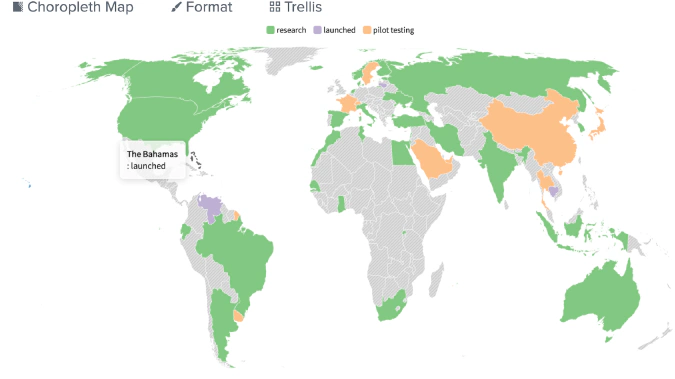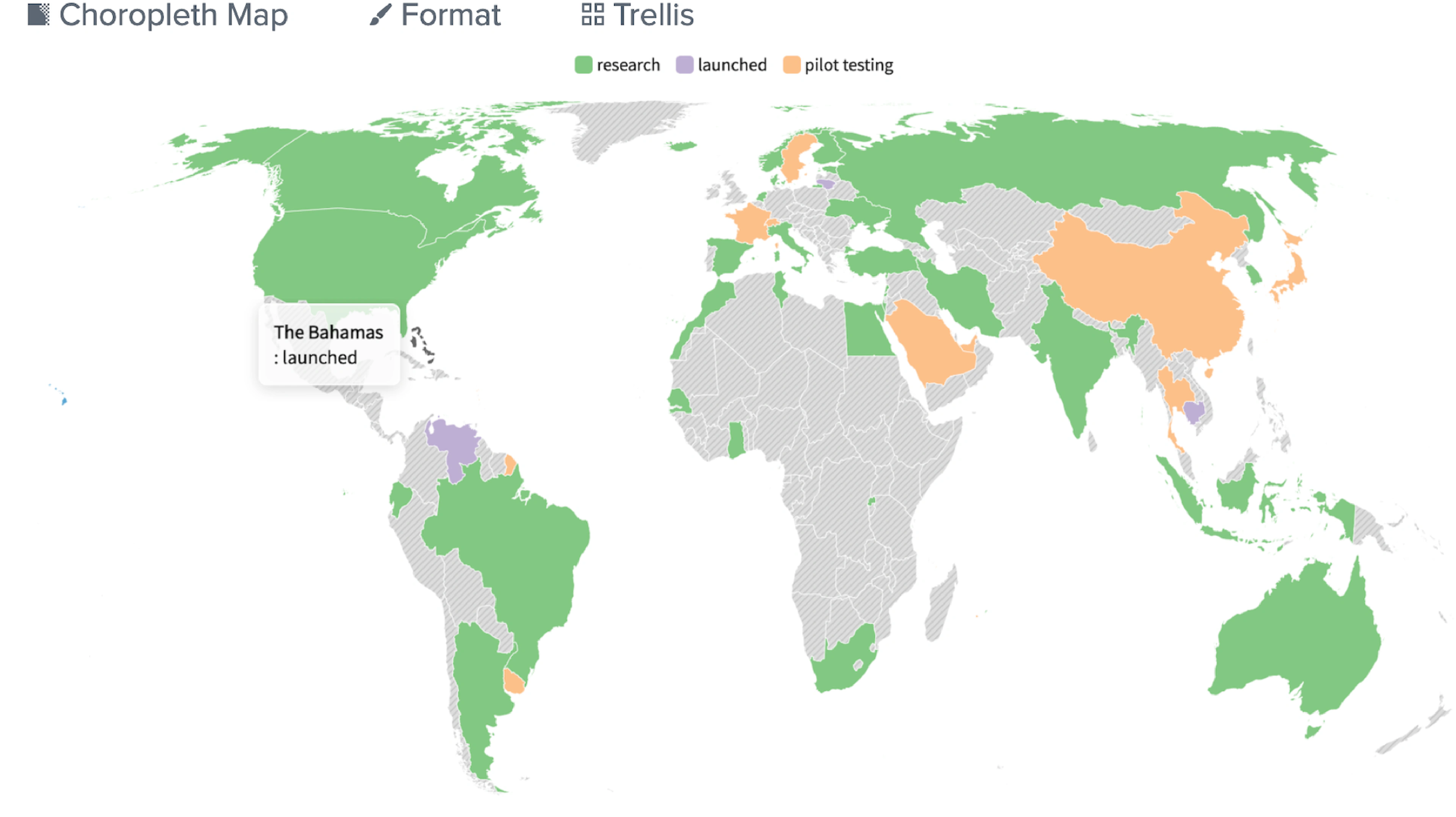Summary
The Bahamas’ Sand Dollar is a distributed CBDC that was rolled out on October 20, 2020. The Bahamas is one of the first countries to move beyond pilot testing of its CBDC. It has a functioning blockchain ecosystem and is progressing in creating CBDC-specific legislation. As The Bahamas is an island nation and has many residents who do not have access to financial services, the Sand Dollar’s main objective is to provide greater financial inclusion across all the country.
The idea of the project was first introduced in June, 2018. The pilot testing started on the islands of Exuma and Abaco in December, 2019, and was hailed as a success. Although the Sand Dollar cannot be held non-domestically, the Bahamas seek an international use of the Sand Dollar in the future.


Legislation
There is no CBDC-specific legislation in The Bahamas yet. Sand Dollar is subject to the same regulations as the Bahamian Dollar. Sand Dollar is a liability of the Central Bank of The Bahamas equivalent to the paper currency and is defined as a “digital fiat currency”. It has AML and KYC protections. The Central Bank sees the Sand Dollar as a way to strengthen defenses against financial crimes and money laundering due to the ability to track and record transactions.
On February 15, 2021, the Central Bank of the Bahamas published a consultation paper on the regulation of the central bank issued electronic Bahamian dollars. The paper proposes amendments to the current legislation. It also sets the rules for registering as a wallet service provider, issuing and distributing electronic Bahamian dollars, transacting in electronic Bahamian dollars, and overseeing electronic Bahamian dollars by the central bank. The consultation period will end on March 31, 2021.
In 2020, The Bahamas introduced the Digital Assets and Registered Exchanges Bill (DARE) that created a legal framework for issuance and trading of cryptocurrency in the region. According to DARE, the businesses providing such services are obliged to register with the Securities Commission of The Bahamas (SCB). If violated, the Bill imposes fines of up to $500,000, ban or suspension from operations, and prison sentence of up to five years.
Issuance
The Central Bank of The Bahamas is responsible for Sand Dollar issuance.
Custody
The Central Bank of The Bahamas ‘maintains the ledger of all individual holdings of the digital currency’. There is also a number of Sand Dollar authorised financial institutions (AFIs) who act as custodians as well.
Distribution
The Sand Dollar is stored on digital wallets and distributed through commercial banks, money transmission businesses, credit unions and payment service providers.
If a bank or any other financial institution wants to add Sand Dollars to their wallet, they make a request to a Central Bank which adds the requested amount to the institution’s wallet. The transfer for the Sand Dollars is paid for in fiat currency. Then these Sand Dollar authorised financial institutions (AFIs) distribute Sand Dollars to the final customers, business entities or individuals. In order to get the CBDC, one has to download an eWallet from one of the providers, and pass the KYC-verification.
Technology
In March 2019, NZIA Limited, a local tech provider, was chosen as a preferred technology solutions provider. Together with Zynesis Pte. Ltd., a Singapore-based software development company specializing in blockchain solutions, it built a Sand Dollar ecosystem on a proprietary software stack called Cortex DLT. There are hardware nodes running the platform and a hybrid wireless network at the top to connect the mobile devices. This is an important feature as it provides connectivity even when the power is lost. The platform is open-ended and allows participants to build on top of the network. It also allows the issuer to set an expiration date or assign certain use of funds.
To use the coins with a smartphone, one has to download a digital wallet approved by the Central Bank. The wallet users are not required to have a bank account. An alternative to the digital wallet on a smartphone is a card-based wallet (like a prepaid credit card). The wallets have a grading system based on the amount being kept on the account. Customers can use the app to store, transfer or pay with sand dollars.
Usage
The Sand Dollar is a legal tender and a liability to the Central Bank of The Bahamas. It is also considered an ‘equivalent in every respect to the paper currency’. According to the Sand Dollar website, it is already possible to pay for government services with Sand Dollars. The CBDC can also be used to pay to some merchants and individuals who have their eWallets installed. As of December 2020 there is $130,000 worth of sand dollars in circulation.
In February 2021, the Central Bank of The Bahamas partnered with Mastercard and a digital payment startup called Island Pay to launch a prepaid card for its digital currency. Sand dollars can now be loaded onto this prepaid card, converted into traditional Bahamian dollars, and used for paying for goods and services anywhere Mastercard is accepted.
Trading Venues
There is no spot market trading venue yet. But there are financial intermediaries who are allowed to act as sponsors of mobile payment wallets and are eligible to ‘maintain clearing accounts with the Central Bank, including commercial banks, credit unions, money transmission businesses (MTBs), and payment service providers (PSPs)’.
Appendix
Key people
Chaozhen Chen, assistant manager of eSolutions at the Central Bank of The Bahamas
Cleopatra Davis, head of Banking Department at the Central Bank
John Rolle, governor of the Central Bank of The Bahamas
Key organizations
Central Bank of The Bahamas
NZIA Limited
Zynesis Pte. Ltd.